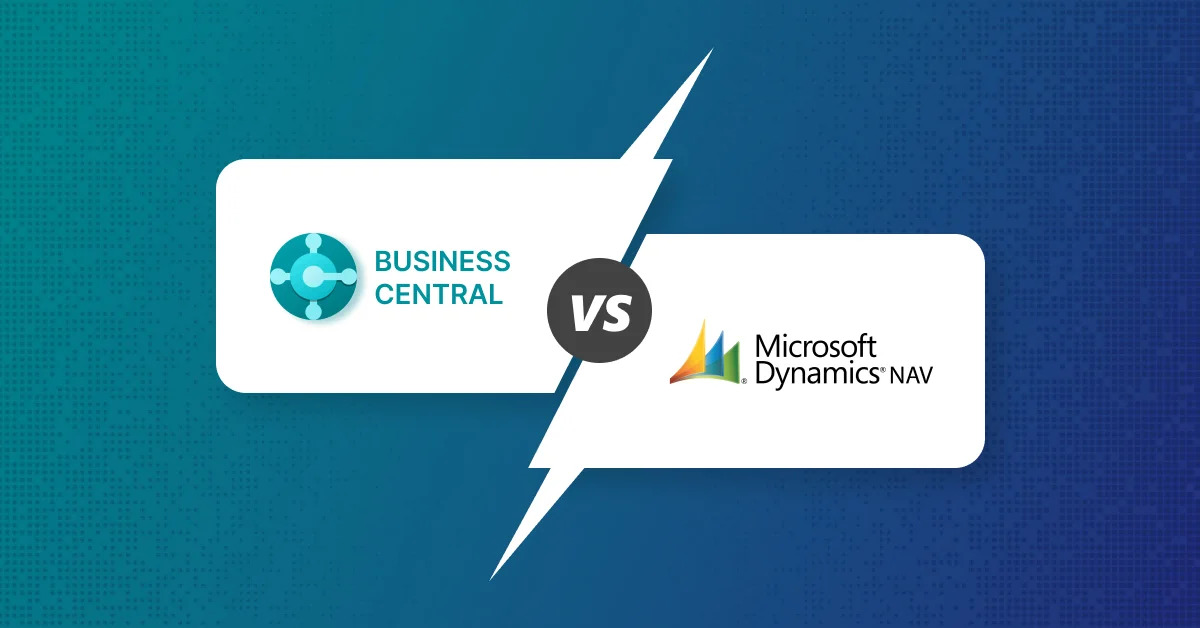
Transitioning from Dynamics NAV 2009 to Business Central represents a significant step for businesses seeking to modernize their operations and leverage the latest advancements in technology. This comprehensive upgrade not only ensures continued support but also introduces a plethora of features designed to enhance productivity and efficiency. Here’s a strategic guide to facilitate a seamless upgrade from Dynamics NAV 2009 to Business Central.
Understanding the Need for an Upgrade
Dynamics NAV, though a robust and reliable ERP solution, has reached the end of its mainstream support lifecycle. This means no more updates, security patches, or new features from Microsoft, posing risks related to security, compliance, and operational efficiency. Upgrading to Business Central, a cloud-based ERP solution, mitigates these risks while offering modern functionalities, enhanced integration capabilities, and superior support from a certified Dynamics 365 partner.
Key Benefits of Upgrading to Business Central
Cloud Integration and Accessibility: Business Central is a cloud-first solution, enabling businesses to access their data and applications from anywhere, at any time. This flexibility supports remote work and ensures business continuity.
Enhanced Security and Compliance: With built-in security features and regular updates, Business Central ensures compliance with the latest industry standards and regulations, safeguarding your business data against potential threats.
Scalability and Customization: As your business grows, Business Central scales seamlessly. It offers extensive customization options to tailor the system to your unique business needs, supported by a reliable Dynamics 365 implementation team.
Improved Analytics and Reporting: Business Central provides advanced analytics and reporting tools, helping businesses gain actionable insights and make data-driven decisions.
Integration with Microsoft Ecosystem: Business Central integrates seamlessly with other Microsoft solutions such as Office 365, Power BI, and Azure, creating a unified and efficient operational environment.
The Upgrade Process: A Step-by-Step Approach
Upgrading from Dynamics NAV 2009 to Business Central involves several critical steps. Here’s a detailed roadmap to guide you through the process:
1. Assess Your Current System
Begin by conducting a thorough assessment of your existing NAV 2009 system. Identify customizations, integrations, and third-party add-ons that are critical to your operations. This assessment helps in planning the scope and resources required for the upgrade.
2. Choose the Right Dynamics 365 Partner
Selecting a certified Dynamics 365 partner is crucial for a successful upgrade. Look for a partner with extensive experience in Dynamics 365 implementation and support. They should provide a clear roadmap, offer customized solutions, and ensure minimal disruption to your business operations.
3. Plan the Upgrade Strategy
With your Dynamics 365 partner, develop a detailed upgrade plan. This plan should include timelines, resource allocation, risk management strategies, and a communication plan to keep all stakeholders informed throughout the process.
4. Data Migration and Cleansing
Data migration is a critical step in the upgrade process. Cleanse your data to eliminate redundant or outdated information. Your Microsoft solutions partner will assist in mapping data fields from NAV 2009 to Business Central, ensuring data integrity and consistency.
5. System Configuration and Customization
Dynamics 365 Business Central offers a wide range of customization options. Work with your Dynamics 365 partner to configure the system according to your business needs. This might include setting up workflows, customizing dashboards, and integrating third-party applications.
6. Testing and Validation
Before going live, conduct rigorous testing to ensure that all functionalities are working as expected. This includes user acceptance testing (UAT), performance testing, and security testing. Address any issues or bugs identified during this phase.
7. Training and Change Management
Effective change management is vital for the success of the upgrade. Provide comprehensive training to your employees to familiarize them with the new system. Utilize resources provided by your Dynamics 365 support team to facilitate a smooth transition.
8. Go Live and Post-Upgrade Support
Once testing is complete and your team is ready, go live with Business Central. Monitor the system closely during the initial phase to address any issues promptly. Your Dynamics 365 implementation partner will provide ongoing support to ensure everything runs smoothly.
Overcoming Common Challenges
The upgrade process, while beneficial, can pose several challenges. Here’s how to address them:
Data Migration Issues: Ensure thorough data cleansing and mapping to prevent data loss or corruption.
System Downtime: Plan the upgrade during off-peak hours to minimize business disruption.
User Resistance: Engage employees early in the process, provide adequate training, and communicate the benefits clearly to gain their buy-in.
Leveraging Dynamics 365 Support for Continuous Improvement
Post-upgrade, leveraging continuous Dynamics 365 support is crucial to maintaining and optimizing your system. A trusted Microsoft solutions partner will offer proactive maintenance, regular updates, and strategic advice to help you maximize your investment in Business Central.
Conclusion
Upgrading from Dynamics NAV to Business Central is a strategic move that positions your business for future growth and success. By partnering with an experienced Dynamics 365 partner, you can navigate the complexities of the upgrade process with confidence. Embrace the power of modern ERP solutions and unlock new opportunities for efficiency and innovation in your business operations.